





|
(1919 - 1987)
music through the dedication of his life to the art. His was a career that spanned seven decades, beginning when Rich was 18 months old and continuing until his death in 1987. Immensely gifted, Rich could play with remarkable speed and dexterity despite the fact that he never received a formal lesson and refused to practice outside of his performances. Born Bernard Rich to vaudevillians Robert and Bess Rich on September 30, 1917, the famed drummer was introduced to audiences at a very young age. By 1921, he was a seasoned solo performer with his vaudeville act, "Traps the Drum Wonder." With his natural sense of rhythm, Rich performed regularly on Broadway at the age of four. At the peak of Rich's early career, he was the second-highest paid child entertainer in the world. Rich's jazz career began in 1937 when he began playing with Joe Marsala at New York's Hickory House. By 1939, he had joined Tommy Dorsey's band, and he later went on to play with such jazz greats as Dizzy Gillespie, Charlie Ventura, Louis Armstrong and Gene Krupa. Rich was regularly featured in Jazz at the Philharmonic during the late 40s. He also appeared in such Hollywood films as Symphony of Swing (1939), Ship Ahoy (1942) and How's About It (1943). Throughout the 1960s and 70s, Rich toured with his own bands and opened two nightclubs, Buddy's Place and Buddy's Place II. Both clubs were regularly filled to capacity by fans of the great master drummer. After opening Buddy's Place II, Rich introduced new tunes with elements of rock into his repertoire, demonstrating his ability to adapt to his audience's changing tastes and establishing himself as a great rock drummer. Known for his caustic humor, Rich was a favorite on several television talk shows including the Tonight Show with Johnny Carson, the Mike Douglas Show, the Dick Cavett Show and the Merv Griffin Show. During these appearances, Rich entertained audiences through his constant sparring with the hosts and his slights of various pop singers. This famed musician received outstanding recognition throughout his career. The Downbeat Magazine Hall of Fame Award, the Modern Drummer Magazine Hall of Fame Award and the Jazz Unlimited Immortals of Jazz Award are just a few of his numerous honors. Rich gained international attention for such master compositions as his 10-minute West Side Story medley. During his lengthy career, Rich toured around the globe, performing for millions of fans and several world leaders including the king of Thailand, the queen of England, Franklin Roosevelt, John F. Kennedy, Ronald Regan and King Hussein of Jordan. On April 2, 1987, Rich died of heart failure following surgery for a malignant brain tumor. Long-time friend, Frank Sinatra, presented the eulogy at Rich's funeral. Today, Buddy Rich is remembered as one of history's greatest musicians. According to jazz legend Gene Krupa, Rich was "The greatest drummer ever to have drawn breath." Source: Official Buddy Rich Web site 1917 - Buddy Rich was born in Brooklyn NY. 1919 - At the tender age of 18 months, he was already featured in his parent's Vaudeville act Wilson & Rich. 1921 - Buddy Rich made his Broardway debut in Raymond Hitchcock's pinwheel. 1923 - Buddy went with his parents to Australia where for 18 months, he presented a solo act Traps The Drum Wonder 1928 - By the age of 11, Buddy Rich was the second highest paid child star in the world, after Jackie Coogan, and he toured throughout the United States with his own showband. 1931 - His parents retired from Vaudeville and the Rich family settled in Brooklyn where Buddy soon became a part of the flourishing New York jazz scene of the 1930's. 1938 - Buddy Rich's jazz career began seriously at the Hickory House in New York, where he played with Joe Marsala. 1939 - Rich worked with Bunny Bergian and Artie Shaw. 1939-42 - Featured with the Tommy Dorsey Orchestra before joining the U.S Marines. 1945-46 - Buddy Rich rejoined the Dorsey Orchestra and, by then, he was not only the highest paid sideman in the world but indisputably regarded as the greatest drummer of his day. 1946 - Buddy Rich decided to form his own big band with excellent arrangements by writers like Tadd Dameron and fine soloists like Zoot Sims, Al Kohn, Tony Scott and Johnny Mandell. 1947 - By this time the great days of the Big Band era were drawing to a close and Buddy Rich decided to accept an offer from Norman Granz to join Jazz At The Philharmonic. Between tours all over the world with JATP, Rich was one of the leading figures in the New York Jazz scene, where he worked and recorded with pioneering bop musicians like Charlie Parker, Dizzy Gillespie, Thelonius Monk , Al Haig, Dexter Gordon, and many other great jazz players. 1950's - Buddy Rich worked alternately with the Harry James and Tommy Dorsey Orchestra. 1961 - Back with the Harry James band and once again the driving force behind this excellent Orchestra. 1966 - Buddy Rich decided to take the plunge and form his own big band. He assembled some of the leading players of the day, like Gene Quill and Pepper Adams. Over the next few years, the personnel of the Rich Orchestra included outstanding musicians like Don Menza, Art Pepper, Al Porcine, Pat LaBarbera and Steve Marcus. 1967 - Jackie Gleason selected the Buddy Rich Orchestra to feature on his summer TV series. During the autumn, he toured with Frank Sinatra. 70's - 80's -Buddy Rich continued lead his big band, except for a brief spell in 1974 when he formed a small group (featuring Sal Nistico, Sonny Fortune, Joe romano, Jack Wilkins, Kenny Baron, and John Bunch) at a club he opened in New York called Buddy's Place. 1987 - Buddy continued to tour with his big band until his death on April the 2nd 1987. Source: Drummers Unlimited 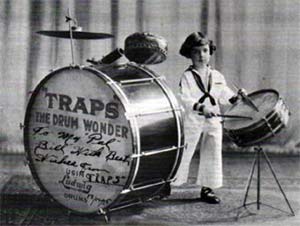 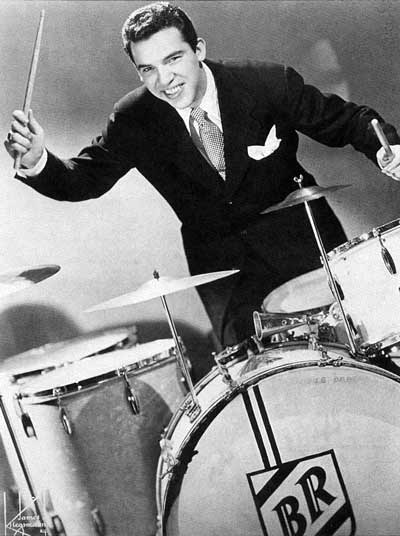 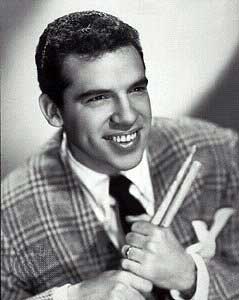 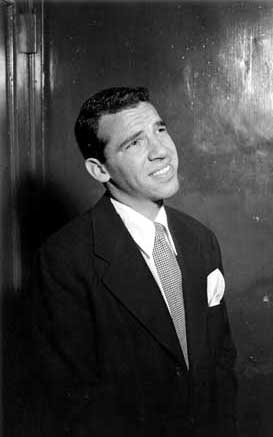 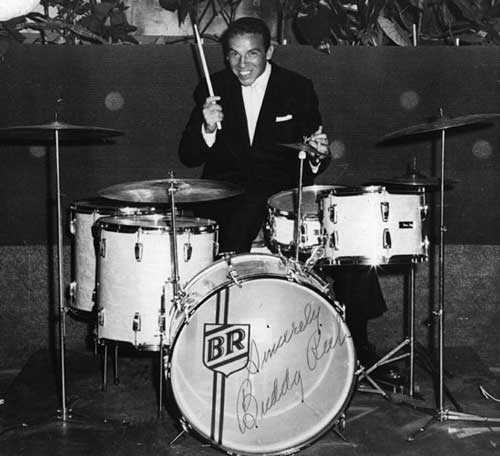 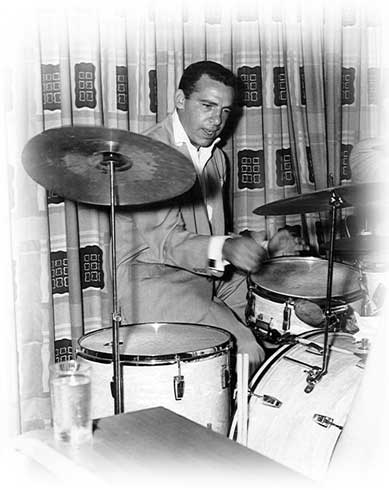 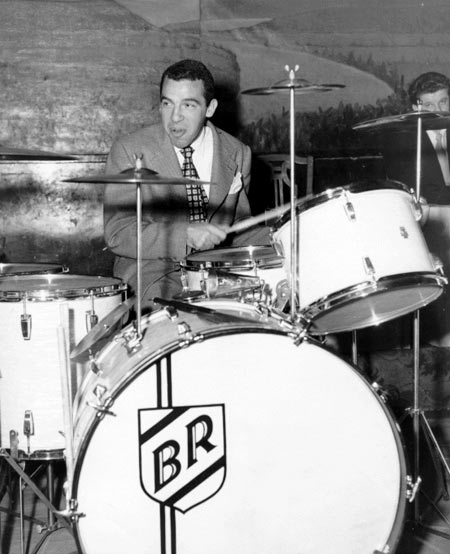   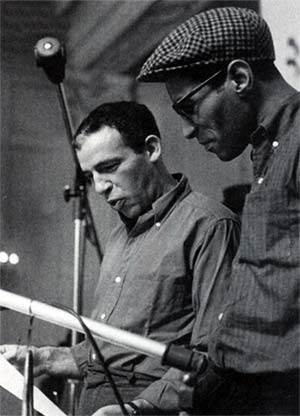 Buddy Rich and Max Roach 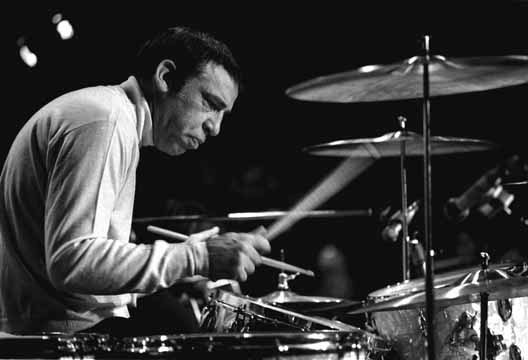 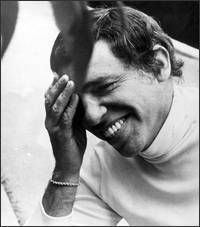 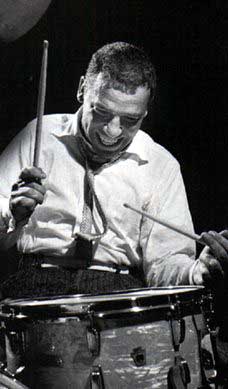 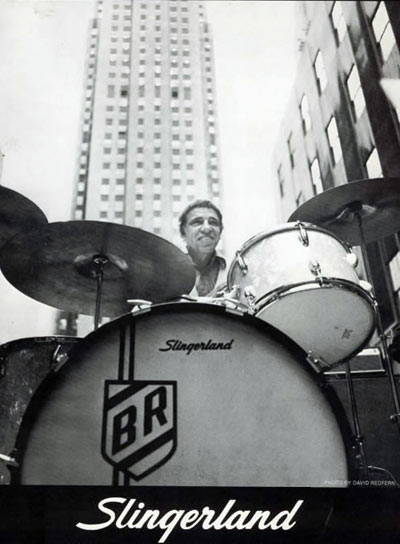 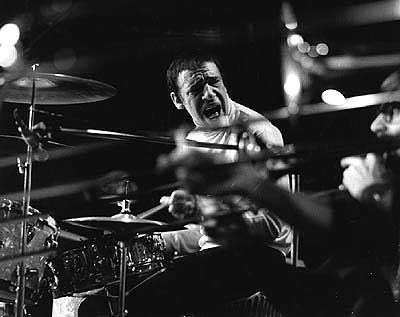 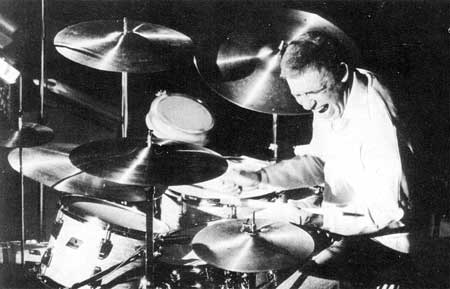 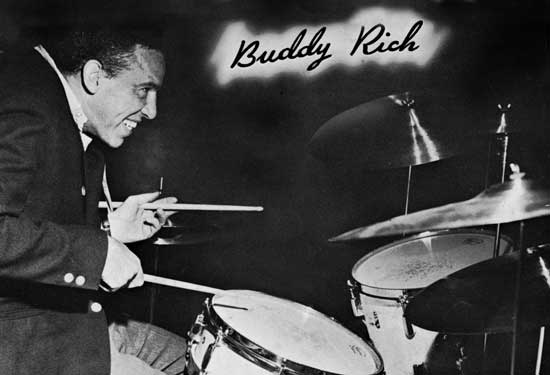 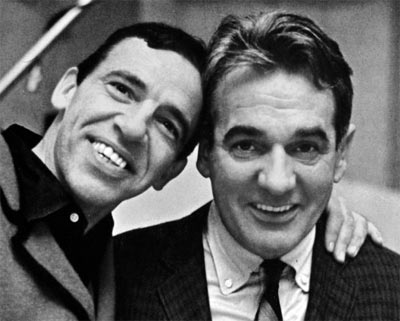 Buddy Rich and Gene Krupa 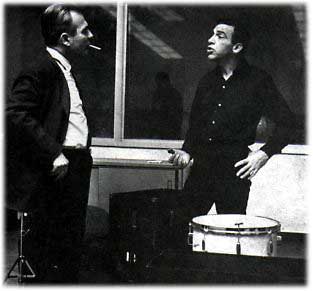 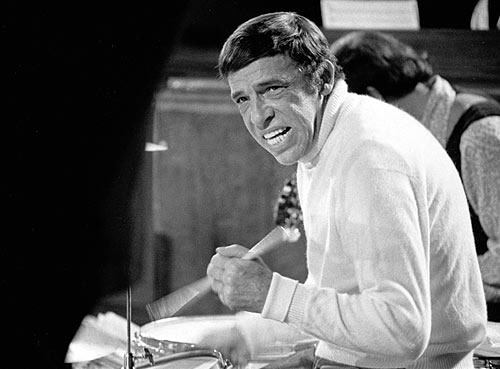 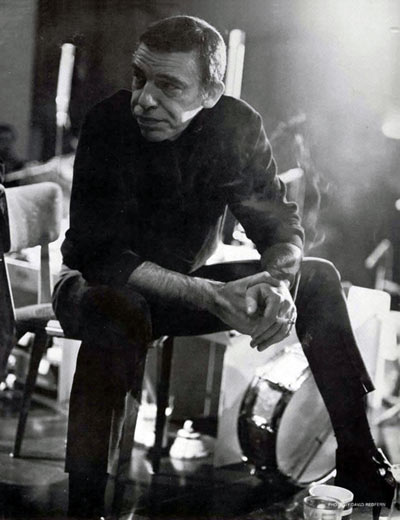 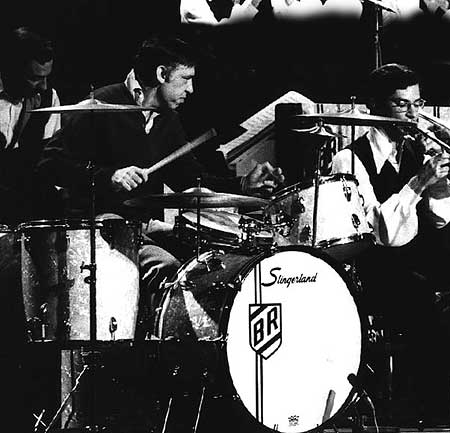 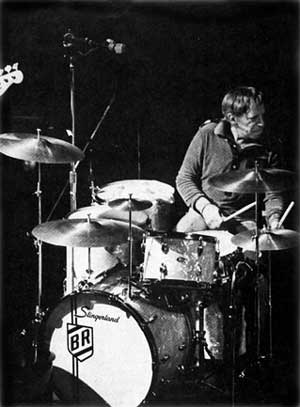 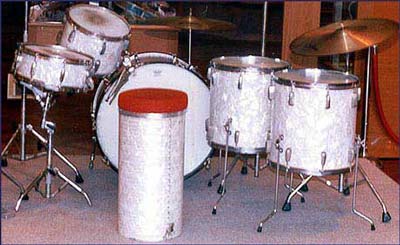 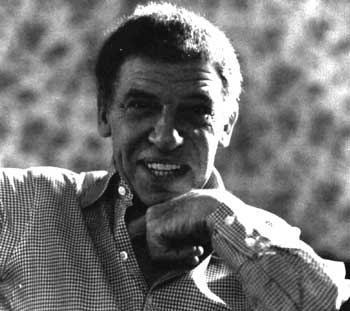 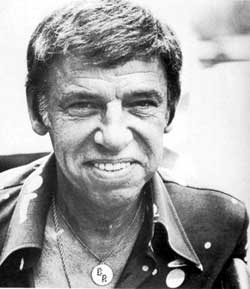  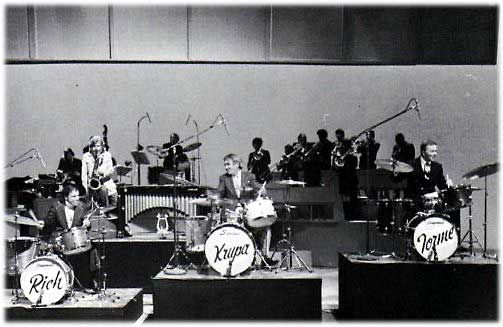 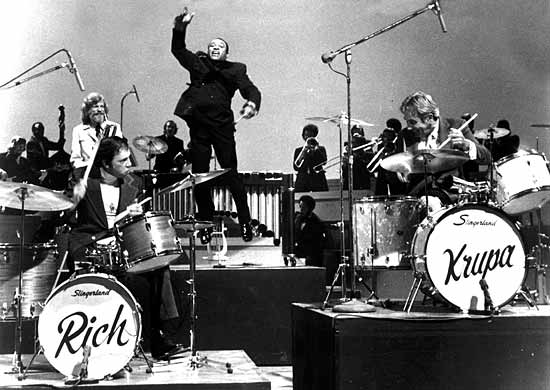  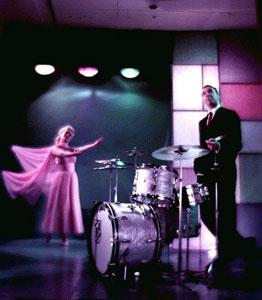 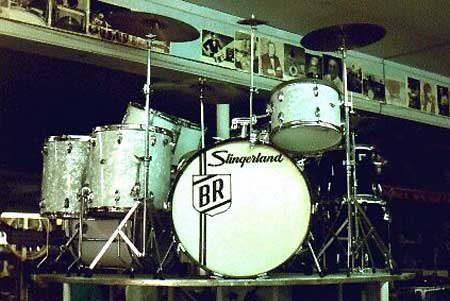 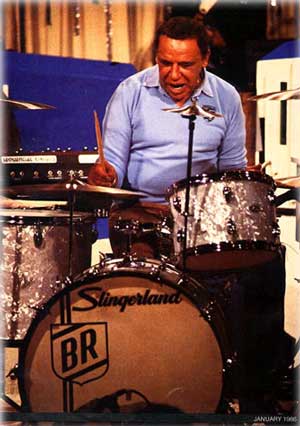 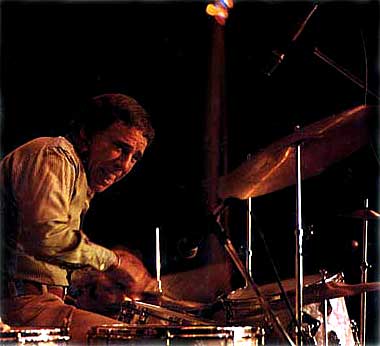 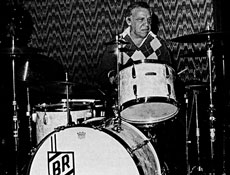 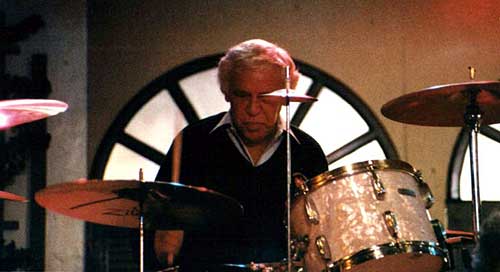 |

















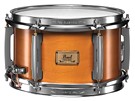





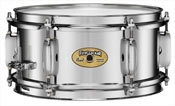

















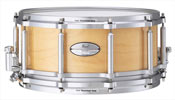



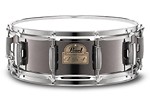


|